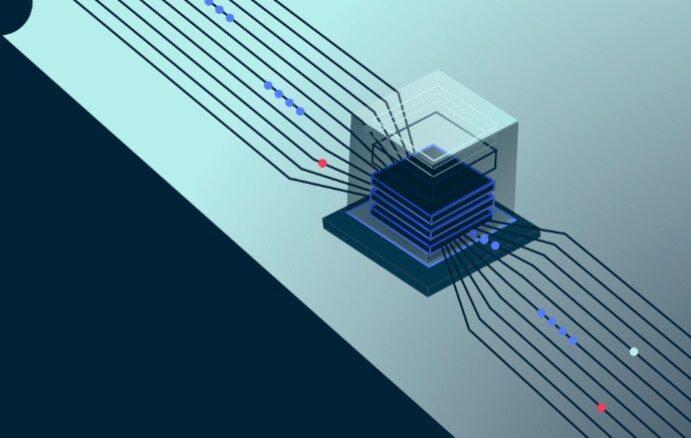
While the world continues to fixate on AI, there are still plenty of high performance computing workloads that need doing and a speedup to any one part can have a big impact, whether it be computational fluid dynamics, material analysis, or something else.
“Today we’re making great progress with HPC with shared memory, message passing, and GPUs,” Ansys chief technology officer Prith Banerjee told The Next Platform in a recent interview.
But as the engineering challenges grow larger, and the tolerances tighter, companies like Ansys continue to explore alternative technologies, including generative AI, machine learning, and even quantum processing units, to speed things up.
These technologies won’t replace conventional compute but rather augment them in the same way GPUs have been used to offload specific tasks from CPUs. One of the latest technologies Ansys is playing with is a laser-based compute platform from Israeli startup LightSolver.
Specifically, Ansys is testing whether LightSolver’s laser processing unit (LPU) can be used to speed up the kinds of non-polynomial equations – often referred to as NP-hard – common in physics simulations. Finding a definitive solution to these kinds of problems isn’t viable as the compute requirements grow exponentially as the number of variables increases.
These problems are so difficult that it’s usually faster to approximate a solution within acceptable tolerances using heuristics such as trial and error than to actually solve the equation.
These kinds of optimization problems have long been a target for fringe compute platforms like quantum process units, analog, and/or optical computing, and LightSolver’s LPU is no exception. However, unlike quantum systems, which often require power-hungry cryogenic plants to keep noise from drowning out the qubits you’ve wrangled, the LPU runs at room temperature, is entirely analog, and operates on conventional principles – no trip to the quantum realm required.
The Laser Processing Unit
In a traditional heuristic search, the optimization problem is essentially decomposed into a long series of yes/no questions. The more variables there are, the more operations are required to search all the possible combinations for the optimal solution.
“By comparison, in the LPU, the lasers compute with massive parallelism, so all possible options can be checked simultaneously,” Lightsolver explains.
At its heart, Lightsolver’s LPU is made up of a coupled laser array onto which problems are encoded by modulating each laser’s phase and amplitude.
The laser light from the array is then shone into a cavity containing two mirrors facing one another. There, the beams interfere with each other as they pass through a gain medium. This medium serves to amplify the laser light so it can be converted back into a mathematical solution by a detector camera.
After a number of iterations – back and forth trips between the mirrors – the best solution is the one that’s received the highest amplification, the company explained.
LightSolver chief executive officer Ruti Ben-Shlomi likens each laser to a stone tossed in a pond. The ripples interfere with one another, eventually forming a single wave representing the final solution.
This whole process takes place in a matter of microseconds. According to Lightsolver, the limiting factor, at least for optimization problems, is the number of variables each LPU can solve for is proportional to the size of the laser array.
Today, LightSolver’s existing prototype features 100 lasers. However, by 2027, the Israeli startup expects to have an LPU with 200 lasers, and by 2029, it expects to scale that to 1,000.
To solve really big problems, LightSolver envisions entire clusters of LPUs across which work is distributed.
In the meantime, LightSolver has developed a software framework to emulate its LPU on GPUs. This emulator gives prospective customers a platform to test larger problems than existing hardware could otherwise handle.
We have seen quantum computing vendors, including Intel, Microsoft and Google, employ a similar strategy while they work to build systems with enough logical qubits to be useful.
In the case of Ansys, the engineering and physics simulation startup used LightSolver’s LPU emulator to speed up graph partitioning in its LS-Dyna, physics simulation suite.
If you are not familiar, graph partitioning is used in large-scale simulations to break up the workload into smaller pieces so they can be processed in parallel. Ideally the graph is split in a way that minimizes the edges that cross said cut. This is what’s called the min-cut. The closer you can get to the min cut the more efficiently the workload can be parallelized and the faster it should run.
According to Banerjee in 80 percent of trials, LightSolver’s LPU emulator was able to achieve a better solution resulting in simulations roughly 15 percent to 20 percent faster.
That might not sound like much, but “if LS-Dyna can be sped up by 20 percent that’s a very big deal,” he said, noting that, at least for physics sims, quantum still promises far greater speedups, potentially as much as a million times.
Of course, that assumes someone manages to wrangle enough qubits to build a quantum computer capable of doing useful work.
While the benefit of more efficient graph partitioning is somewhat limited for traditional physics simulation, Banerjee sees much larger benefits from technologies like the LPU for workloads like cell placement common in electronic design automation (EDA) software. You may recall Ansys is in the process of being swallowed by Synopsys, one of the largest purveyors of said software.
However, optimization problems are only one of several applications LightSolver is currently exploring.
The startup is also examining how its LPU may be able to accelerate partial differential equations (PDEs), which are common in computational fluid dynamics and finite element analysis.
For these workloads, we’re told scaling works a bit differently, with the laser array being able to account for an order of magnitude more grid points. For example, by 2027, Lightsolver hopes to have an LPU capable of solving PDEs with 100,000 grid points, and a million grid points by 2029.
Sign up to our Newsletter
Featuring highlights, analysis, and stories from the week directly from us to your inbox with nothing in between.
Subscribe now
.png)




